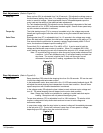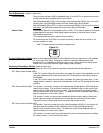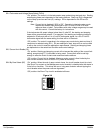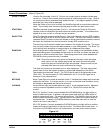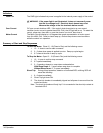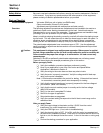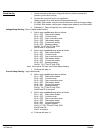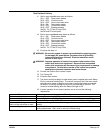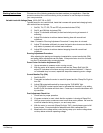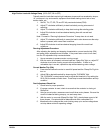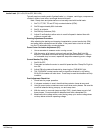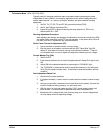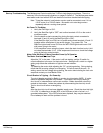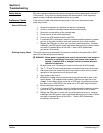
4-4 Start-up MN894
Starting Instructions Choose one of the following examples that best matches your application. Read the
procedure and set the control according to the procedure or use the steps to develop
your own procedure.
Variable Load with Voltage Ramp (S2-2=OFF, S2−4=OFF)
Typically used for non-inertial loads, loads that increase with speed and changing loads,
such as axial fans and pumps.
1. Set RU, TU, PT, RD, TD and PF fully counterclockwise CCW).
2. Set CL and CM fully clockwise (CW).
3. Adjust TU clockwise sufficiently to start load slowly moving at moment of
switching.
4. Adjust RU clockwise to achieve desired starting time with normal load
conditions.
Note: Proceed to “Running Adjustment Procedure” if ramp down is not used.
5. Adjust TD clockwise sufficiently to cause the load to slow down soon after the
stop button is pressed, with normal load conditions.
6. Adjust RD clockwise to achieve desired stopping time with normal load
conditions.
Running Adjustment Procedure:
After adjusting the starting and stopping characteristics, current monitor/trip (CM)
and power factor adjustments can be made. If the power factor circuit is not used,
turn the PF adjustment fully counterclockwise.
Power Factor Correction Adjustment (PF):
1. Use an ammeter to measure motor running current.
2. With the motor at full speed, minimum load and the “Ramp End” light ON,
adjust PF clockwise to minimize running current without oscillation. If there is
no noticeable drop in current, repeat this step while measuring motor voltage.
Current Monitor/Trip (CM):
1. Set S2-2=OFF.
2. Press start and allow the motor to reach full speed and the “Ramp End” light to
turn ON.
3. Adjust CM to desired threshold by observing the “CUR MON” light.
4. The “CUR MON” contact can be used to indicates this threshold, or by setting
the S2-2=ON, the starter will shut down. Press stop to reset the shutdown and
trip condition.
Post Adjustment Check List:
1. Check fans for proper operation.
2. If bypass contactor is used, check that the contactor is closing at Ramp End.
3. Using a current probe, measure current on all three motor phases. Be sure the
current is balanced during ramp on, run and ramp down.
4. With the motor in run mode (Ramp End light “ON”), check phase current of all
three phases. Currents should be balanced and within nameplate FLA.
5. Measure the line voltage at the control during ramp up to ensure voltage does
not drop below minimum operating voltage.



